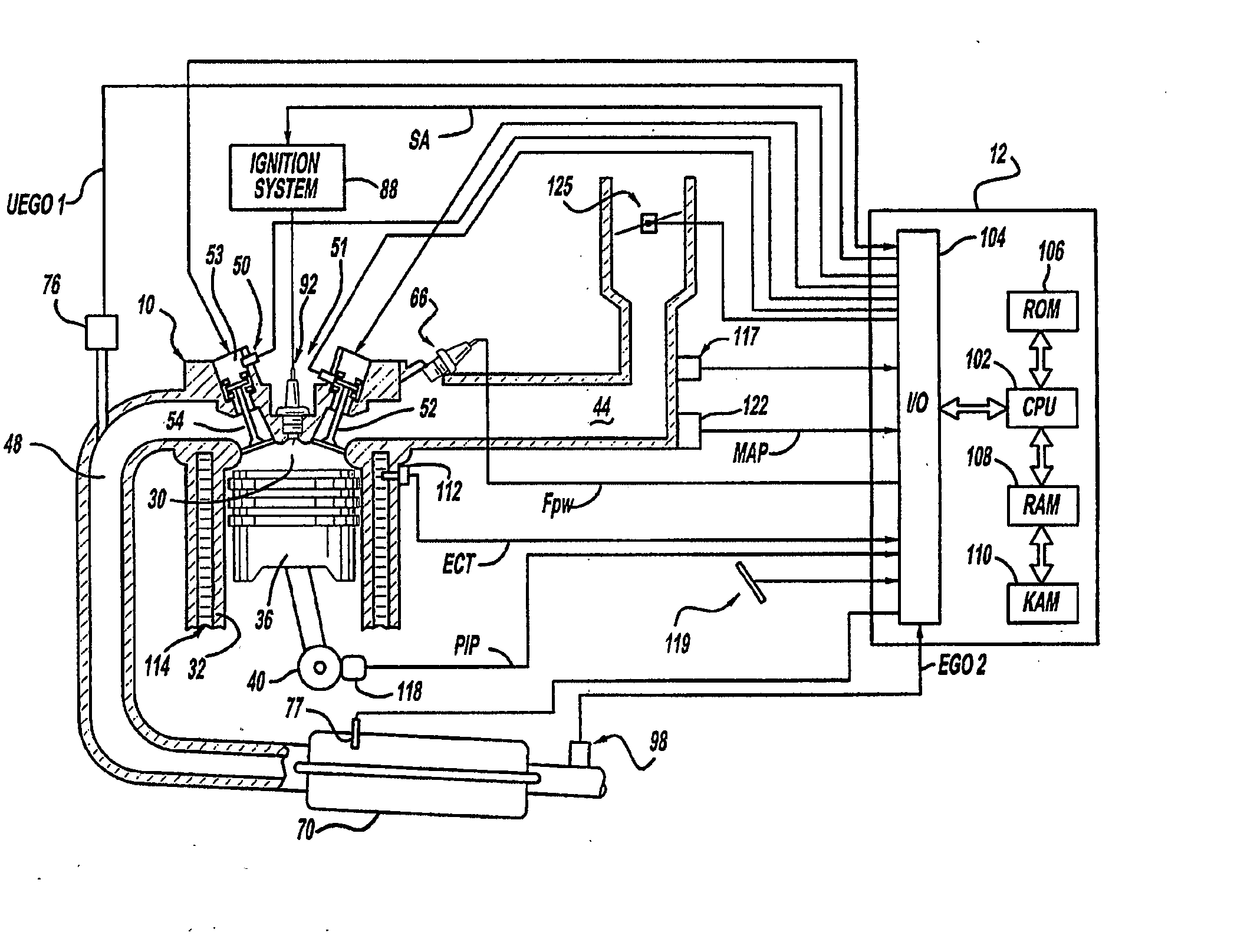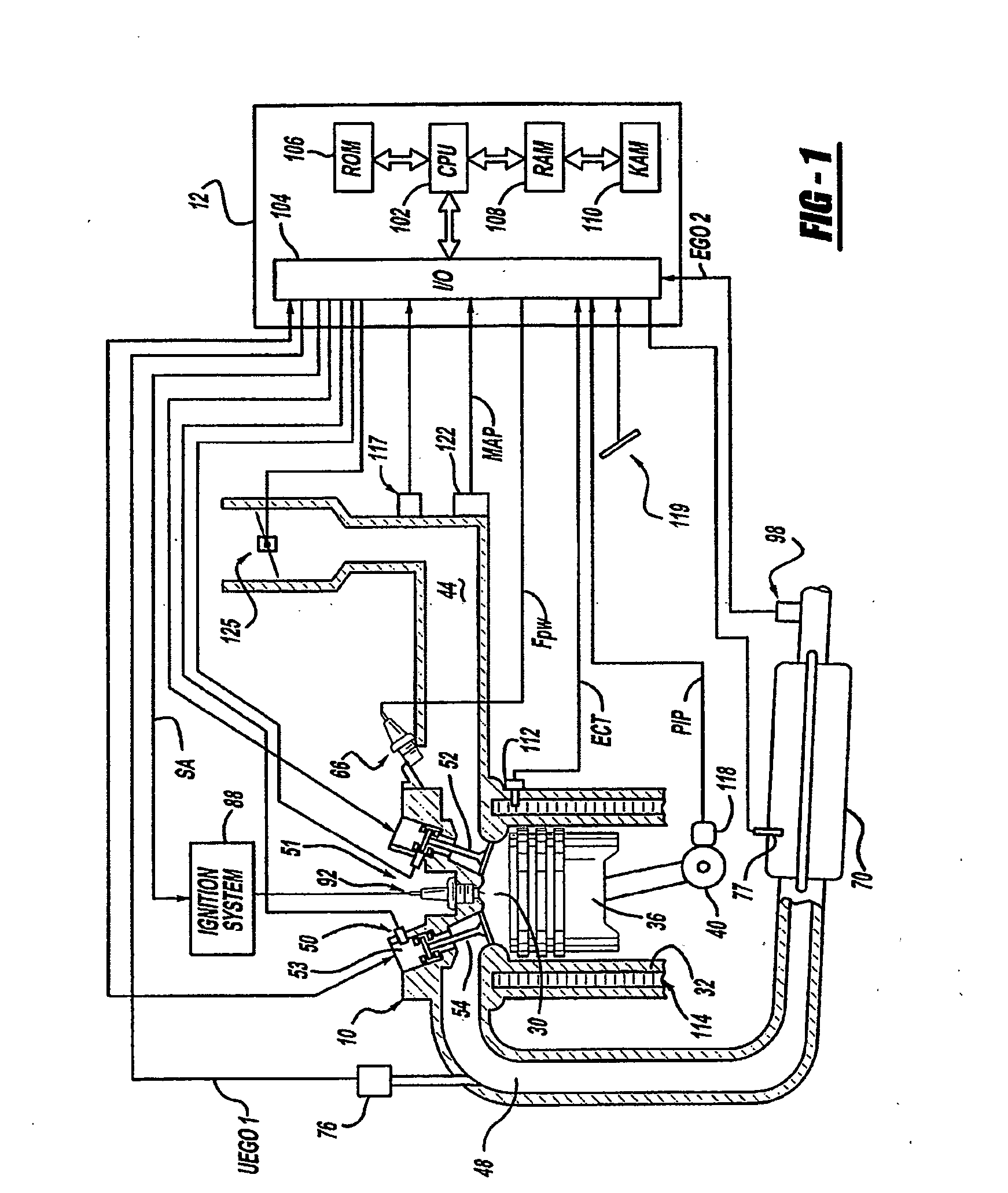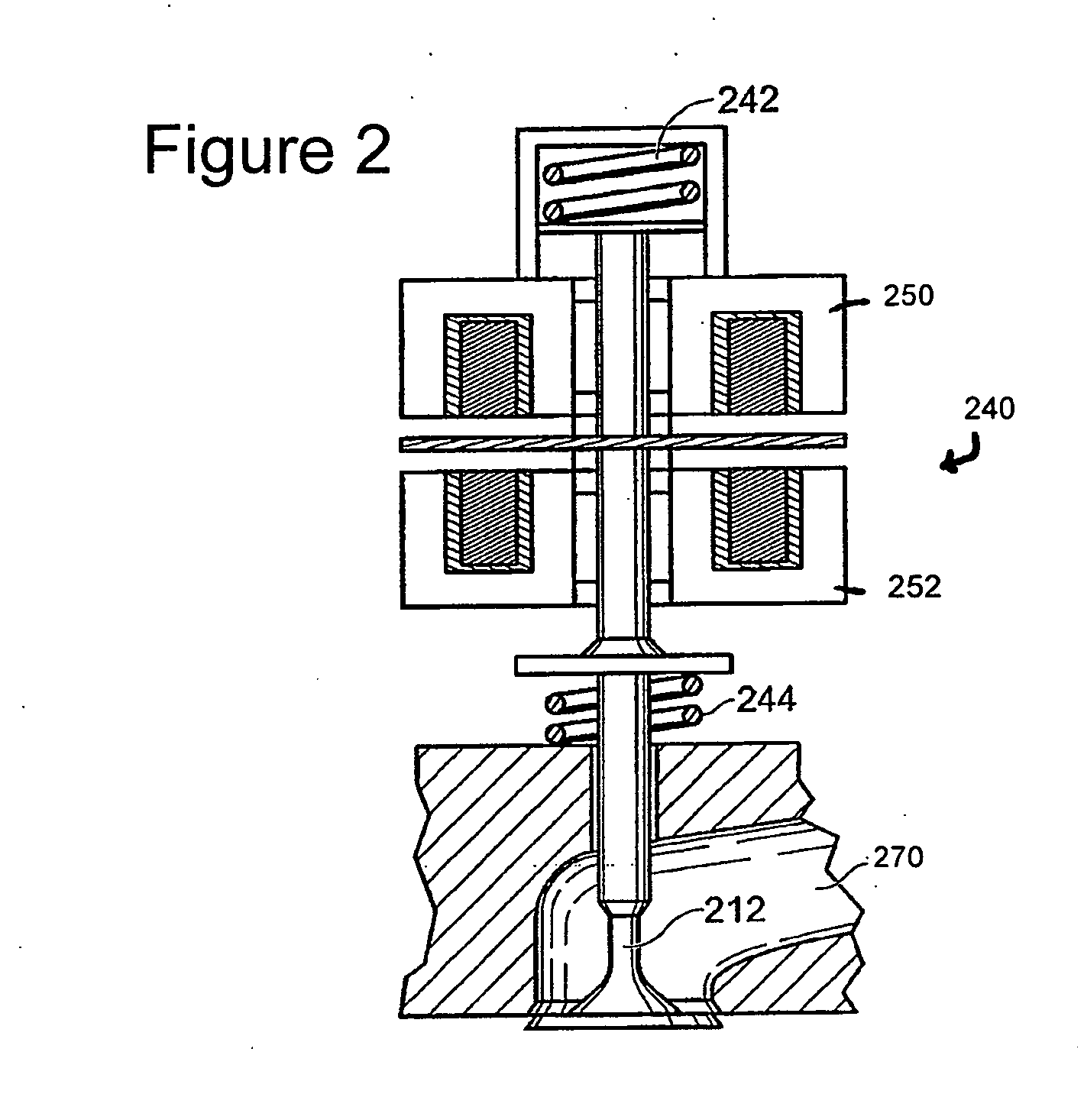System and method for exhaust heat generation using electrically actuated cylinder valves and variable stroke combustion cycles
a technology of electrically actuated cylinder valves and combustion cycles, which is applied in the direction of electric control, machines/engines, mechanical equipment, etc., can solve the problems of low conversion efficiency at ambient temperatures, large quantities of heat produced, and the degree of degradation of exhaust mixing and heat generation, so as to improve the heating of exhaust gas and accelerate the catalyst temperature increase. , the effect of increasing the heat flux to the exhaus
- Summary
- Abstract
- Description
- Claims
- Application Information
AI Technical Summary
Benefits of technology
Problems solved by technology
Method used
Image
Examples
Embodiment Construction
[0013] Referring to FIG. 1, internal combustion engine 10, comprising a plurality of cylinders, one cylinder of which is shown in FIG. 1, is controlled by electronic engine controller 12. Engine 10 includes combustion chamber 30 and cylinder walls 32 with piston 36 positioned therein and connected to crankshaft 40. Combustion chamber 30 is shown communicating with intake manifold 44 and exhaust manifold 48 via respective intake valve 52 an exhaust valve 54. Each intake and exhaust valve is operated by an electromechanically controlled valve coil and armature assembly 53, such as shown in FIG. 2. Armature temperature is determined by temperature sensor 51. Valve position is determined by position sensor 50. In an alternative example, each of valves actuators for valves 52 and 54 has a position sensor and a temperature sensor. In still another alternative, one or more of intake valve 52 and / or exhaust valve 54 may be cam actuated, and be capable of mechanical deactivation. For example...
PUM
 Login to View More
Login to View More Abstract
Description
Claims
Application Information
 Login to View More
Login to View More - R&D
- Intellectual Property
- Life Sciences
- Materials
- Tech Scout
- Unparalleled Data Quality
- Higher Quality Content
- 60% Fewer Hallucinations
Browse by: Latest US Patents, China's latest patents, Technical Efficacy Thesaurus, Application Domain, Technology Topic, Popular Technical Reports.
© 2025 PatSnap. All rights reserved.Legal|Privacy policy|Modern Slavery Act Transparency Statement|Sitemap|About US| Contact US: help@patsnap.com



